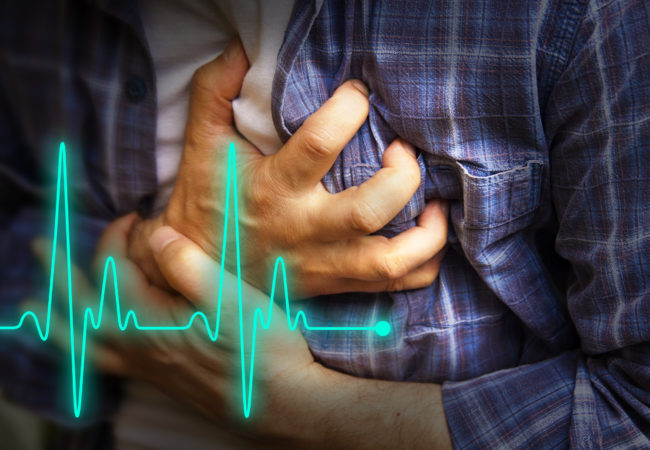Source: Thailand Medical News Nov 25, 2019 5 years, 5 months, 1 day, 13 hours, 39 minutes ago
Statistics show that more than one in ten
cancer patients do not die from their
cancer but from
heart and blood vessel problems instead, according to new research published in the
European Heart Journal 1 today. For some cancers, like breast, prostate, endometrial, and thyroid cancer, around half will die from cardiovascular disease (CVD).

A research team lead by Dr Nicholas Zaorsky, a radiation oncologist, and Dr Kathleen Sturgeon, an assistant professor in public health sciences, both at Penn State College of Medicine and Penn State Cancer Institute, Hershey, Pennsylvania, compared the US general population with over 3.2 million US patients who had been diagnosed with cancer between 1973 and 2012.
The researchers used information contained in the Surveillance, Epidemiology and End Results (SEER) database to look at deaths from CVD, which included heart disease, high blood pressure, cerebrovascular disease, blocked arteries and damage to the aorta - the main artery carrying blood from the heart to the rest of the body. They adjusted their analyses to take account of factors that could affect the results, such as age, race and sex, and they looked specifically at 28 different types of cancer.
Out of the 3,234,256 cancer patients, 38% (1,228,328) died from cancer and 11% (365,689) died from CVDs. Among the deaths from CVD, 76% were due to heart disease, and the risk of dying from CVD was highest in the first year after a cancer diagnosis and among patients younger than 35 years.
Most of the CVD deaths occurred in patients with cancers of the breast (a total of 60,409 patients) and prostate (84,534 patients), as these are among the most common cancers to be diagnosed. In 2012, 61% of all cancer patients who died from CVD were diagnosed with breast, prostate, or bladder cancer. The proportion of cancer survivors dying from CVD was highest in bladder (19% of patients), larynx (17%), prostate (17%), womb (16%), bowel (14%) and breast (12%).
Typically, patients who were more likely to die from cancer than from CVD were those with the most aggressive and hard-to-treat
cancers, such as cancer of the lung, liver, brain, stomach, gallbladder, pancreas, oesophagus, ovary and multiple myeloma.
This research was the largest and most comprehensive study looking at deaths from cardiovascular disease among patients with 28 types of cancer with over 40 years of data. Other, smaller studies have looked at the risk of death from CVD in some specific cancers, but none have looked at so many cancers with such a long follow-up.
Dr Kathleen Sturgeon told
Thailand Medical News, "These findings show that a large proportion of certain cancer patients will die of cardiovascular disease, including heart disease, stroke, aneurysm, high blood pressure and damage to blood vessels. We also found that among survivors with any type of cancer diagnosed before the age of 55 years, the risk of cardiovascular death was more than ten-fold greater than in the general population. Cancer survivors with cancer of the breast, larynx, skin, Hodgkin lymphoma, thyroid, testis, prostate, endometrium, bladder, vulva, and penis, are about as likely to die of cardiovascular diseases
as they are to die of their initial cancer. The risk of death from cardiovascular diseases is several times that of the general population in the first year of diagnosis; sometimes, this risk decreases, but for most, this risk increases as survivors are followed for ten years or more. Increasing awareness of this risk may spur cancer survivors to implement healthy lifestyle behaviours that not only decrease their risk of cardiovascular disease, but also the risk of cancer recurrence."
"Clinicians need to be aware that the majority of cardiovascular disease deaths occur in patients diagnosed with breast, prostate or bladder cancer. Thus, clinics that aim to open "cardio-oncology" centres should likely focus on the inclusion of these sites, followed by the other sites listed above. Additionally, primary care physicians and cardiologists may seek to control cardiovascular diseases more aggressively in cancer survivors. As the number of cancer survivors increase, the rate of cardiovascular deaths will continue to rise."added Dr Zaorsky.
Dr Zaorsky further commented that the reason why cancer patients were more at risk of dying from cardiovascular disease within the first year of diagnosis might be because when they entered the hospital system, other illnesses and problems, such as heart disease, lung dysfunction and kidney failure were also detected. It could also be explained by the aggressive treatment that follows a cancer diagnosis.
"We hope these findings will increase awareness in patients, primary care physicians, oncologists and cardiologists as to the risk of cardiovascular disease among cancer patients and the need for earlier, more aggressive and better coordinated cardiovascular care." Dr Sturgeon concluded.
In an accompanying editorial
2, Dr Jörg Herrmann, a cardiologist at the Mayo Clinic, Rochester, Minnesota, USA, writes: "The important work by Sturgeon
et al. confirms that cancer patients have an on average 2-6 times higher CVD mortality risk than the general population. This is a key message that every cardiologist needs to hear. Secondly, the CVD mortality risk is evident throughout the continuum of cancer care, and entails an acute phase (early risk) and a chronic phase (late risk). In view of such grave and persistent consequences, a reactive management approach that comes into play solely when clinical presentations and complications arise is no longer in order. Rather, one would advocate for a proactive approach that starts before any cancer therapy is given and continues for a lifetime thereafter. Thirdly, even with the best possible cardio-oncology care, no difference in population-based outcomes may be achieved in patients with relentless malignancies, while for others it is of increasing significance."
References:
[1] "A population-based study of cardiovascular disease mortality in US cancer patients", by Kathleen M. Sturgeon et al. European Heart Journal. doi:10.1093/eurheartj/ehz766
[2] "From trends to transformation: where cardio-oncology is to make a difference," by Joerg Herrmann. European Heart Journal. doi:10.1093/eurheartj/ehz781 